Lambrequins for the hall: varieties, selection criteria and beautiful examples

One of the popular decorative elements of a window opening is a lambrequin. These elements give the image of the living room a finished look and add luxury to the interior. The article will discuss lambrequins for the hall, their varieties and features of choice.

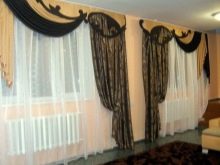
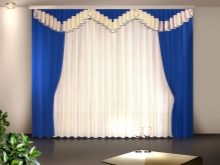
A bit of history
The idea of such window decoration appeared in the 15th century during the Renaissance. However, in those days, in addition to decorating the room, the lambrequin also protected it from the draft. Lambrequins were made of expensive materials, decorated with embroidery, tassels, applique. By the way, they were used not only to decorate the window opening, but also for decorating the sleeping bed.
The Baroque style prevailing at that time implied the use of heavy, luxurious fabrics, richly decorated with decorative elements.
The rococo style that replaced it added lightness and airiness to the lambrequins. For their manufacture, fabrics with a floral print began to be used.
In the future, the design of lambrequins has undergone many changes. Simpler models, consisting of simple shapes and straight lines, came into vogue. Currently, it is a fashionable accessory for a beautiful window opening.
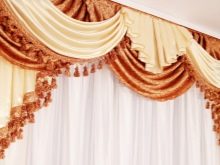
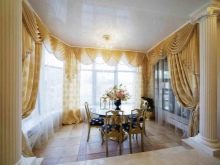
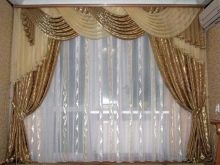
Advantages and disadvantages
Lambrequin is a drapery at the top of the window that serves as a decorative function. Like any other product, they have pros and cons.
The advantages include a number of features:
- with the help of such a drapery, you can visually expand the space of the room;
- lambrequins allow you to visually hide the unevenness of the ceiling and defects in window openings;
- curtains with a lambrequin add luxury and style to the living room;
- the variety of colors and textures of fabrics used allows you to choose lambrequins for almost any room design;
- it is possible to order tailoring of curtains with lambrequins according to an individual project, which will add zest to your home.
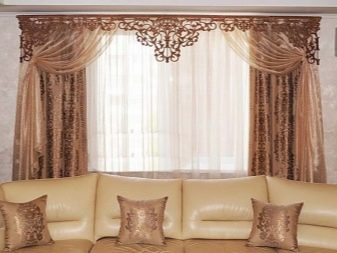
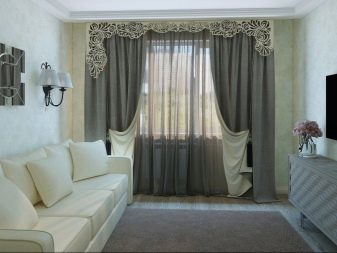
The disadvantages are high price of materials. The fabrics used are expensive and of high quality. In addition, the sewing work is also quite costly.
However, if you have the necessary skills, you can sew the lambrequin yourself.
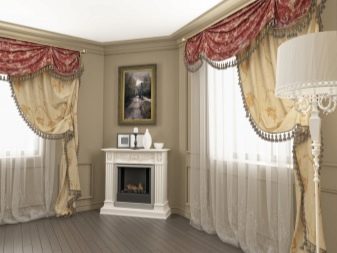
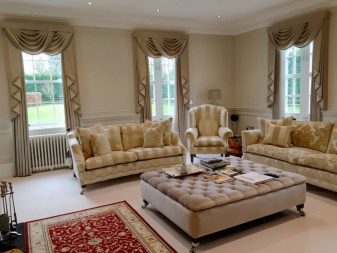
Species overview
There are several types of lambrequins.
Soft
Today it is one of the most popular types of this element.
They are performed from various fabrics. They can consist of one piece of material with a braid threaded into it, or they combine several types of fabric and decorative elements, with the help of which a holistic composition is created.
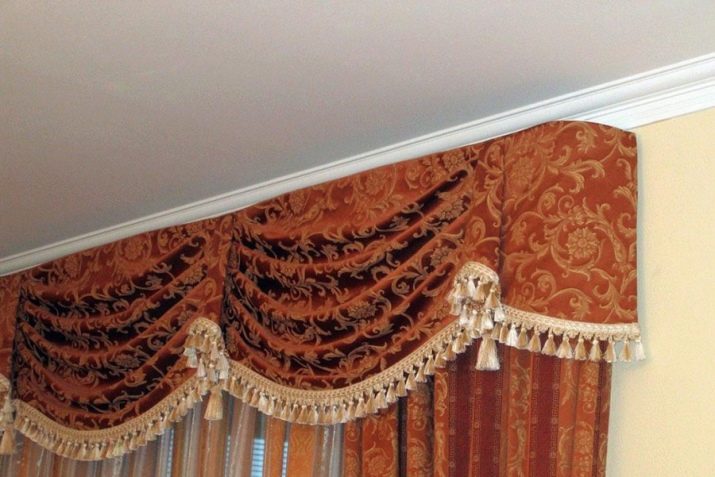
Hard
This type of lambrequin allows you to hide the cornice and the attachment point. Previously, they were made from wood. Modern rigid lambrequins basically use bandos - it is a hard non-woven fabric. In some cases, it is required to additionally fix the drapery. Then various seals are used. Rigid lambrequins are very diverse in their shape... They can be in the form of a semicircle, animals, geometric shapes. Thanks to this, you can choose a model for any style of the living room.
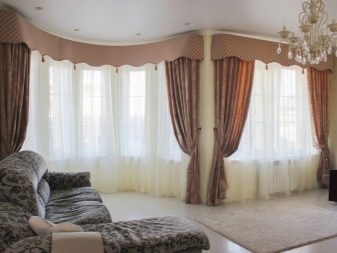

Combined
This look combines both of the previous ones. There is both a rigid base and light drapery. Suitable for large rooms with high ceilings.
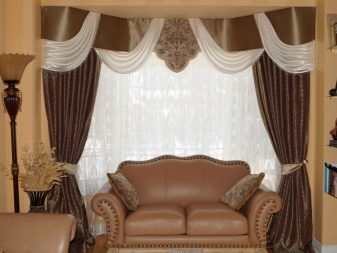

Drapery forms
Depending on the chosen model of the lambrequin, the fabric from which it is made is laid in various ways.
Swagi
Perhaps the most common styling method. Semicircular fabric cuts are folded. Usually two or three of them are made on the cornice.
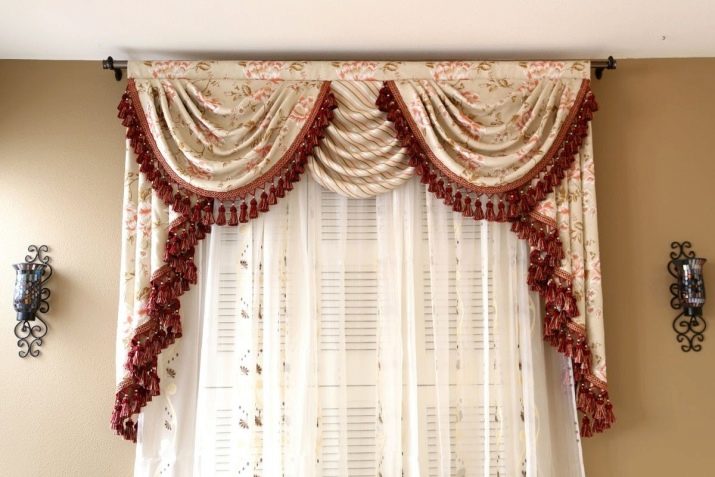
Reversals
They are also called semi-swags. When they are performed, the fabric is thrown over the cornice. Most often they are made for tubular cornices.
For baguette ones, half-wagons are also suitable, but the unique perekid effect and the asymmetry created by such lambrequins are lost.
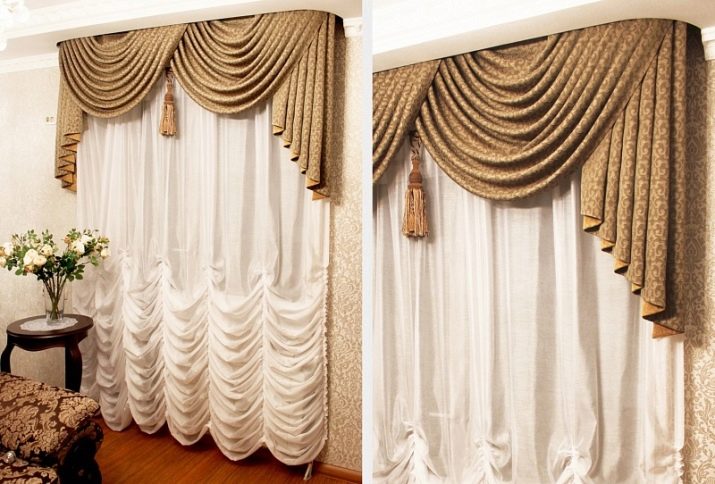
Coquille
A good way if there are several window openings on the same wall. It allows you to conventionally draw a border between them. The material is collected in folds and an acute angle is formed from it. It is hung over the frame of each of the window openings.
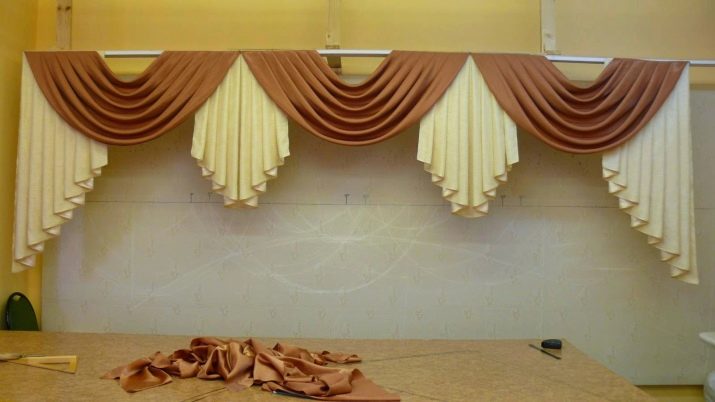
Jabot
An alternative name for de jabot. It is a wide strip of fabric with a beveled edge that sits on the side. Lambrequin consists of overlapping folds that run along the window opening. Jabot is the final touch of such a lambrequin. As a rule, the long side of the de jabot is placed outside, and the short side in the middle of the composition.
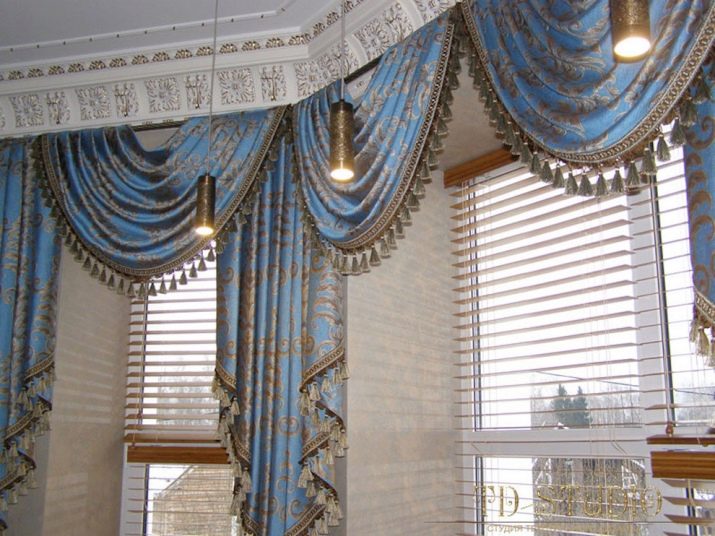
Tie
Similar to the previous one, but narrower. The folds are made on top of each other. A good addition to a lambrequin sewn in the shape of a swag.
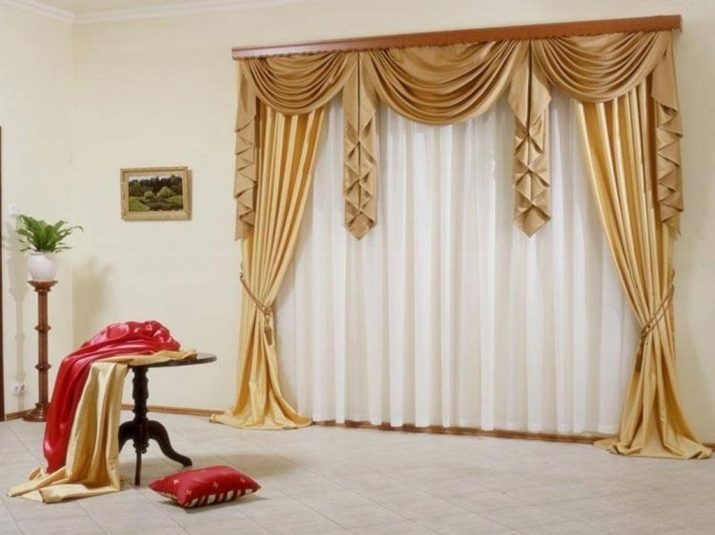
Cascade
It is made from a cut of fabric in the shape of a trapezoid, which falls in wide folds. A good addition would be a lining made of a material of a different color. To be seen, a lapel is made.

Puffs
In this case, the fabric is collected in the form of vertical folds. It often resembles a pigtail and is used in styles such as country or Provence.

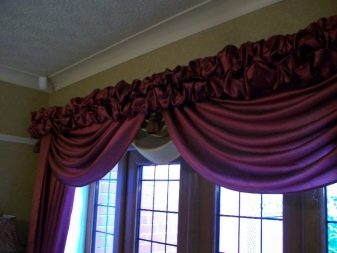
Bell
Today it is one of the rare forms of drapery. The piece of fabric is laid in the form of a cone. A nice addition is the lining in a contrasting color. The material used must be quite dense, since the airy fabric cannot take this shape.
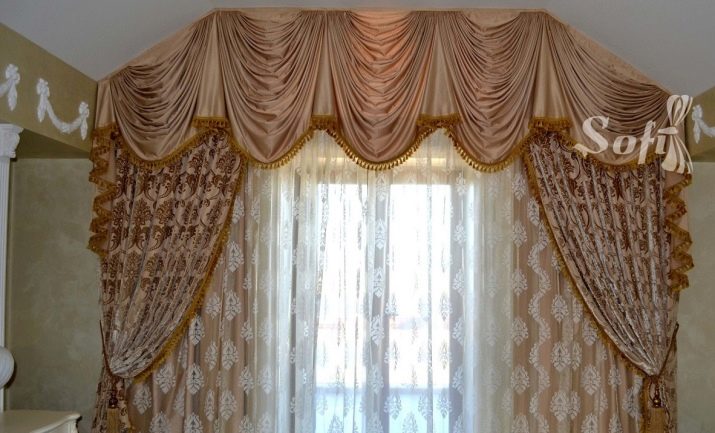
Scallop
To some extent they resemble swagas, but they are made much wider. Such flounces are appropriate in spacious living rooms with high ceilings.
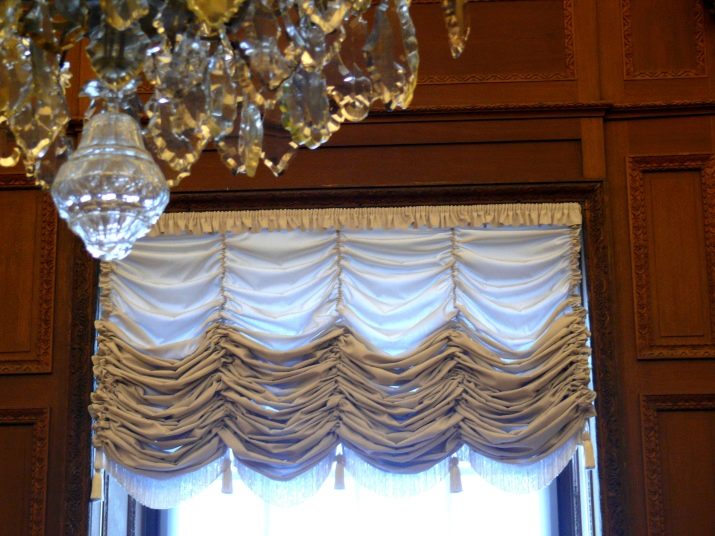
Materials (edit)
The fabrics used for sewing lambrequins are very diverse. Most often they are made from the same fabric as the curtains.... However, a combination of different fabrics is possible.In this case, they must match each other in color and texture. Lambrequins made of light, airy material look good in small living rooms. If you have to choose such an element of decor for a spacious room, then you should take a closer look at denser and heavier fabrics. They will add luxury and respectability to the room.
Veil
Lightweight, almost weightless fabric. Lambrequins made of such material will become an elegant decoration for a small living room. The veil has a high ability to drape; beautiful folds and flounces are obtained from it. The lightness and translucency of the fabric allows you to play with colors, for example, make a transition from a bright to a lighter shade.
Ideal for living room in classic style as well as in Provence style.

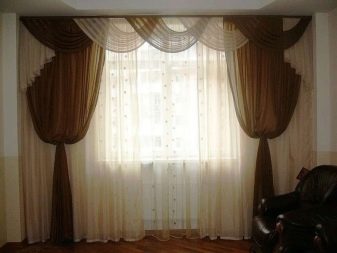
Organza
In its abilities, this material is very similar to a veil. It also drapes easily and keeps its shape well. Such fabric easily transmits sunlight, fills the room with comfort. But choosing this material for a lambrequin, pay attention to the quality of the fabric processing.
Otherwise, the composition will look harsh and sloppy.

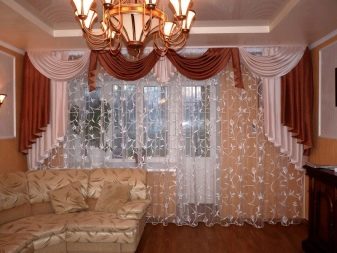
Nylon
Lightweight but fairly durable material. Has a wide range of colors, however lambrequins made of such fabric are very difficult to sew.
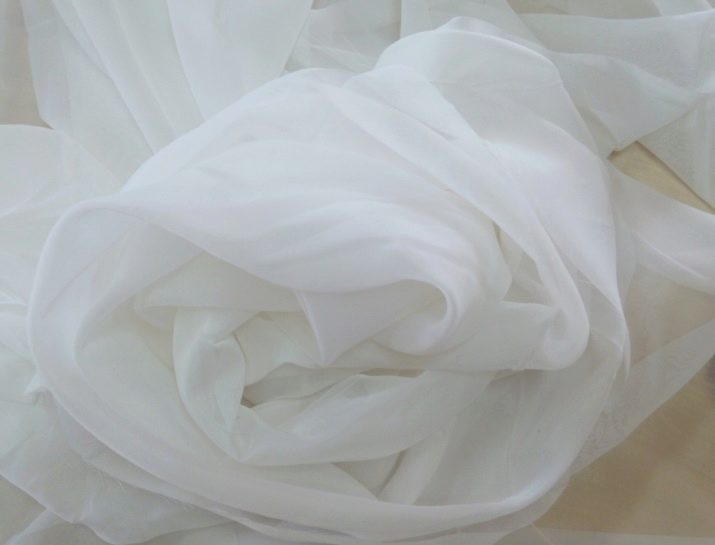
Felt
It is becoming more and more popular. Openwork decor is made of this material, which is attached to a special tape. It will be a good stylistic addition to your living room if it is combined in color with other decorative elements, or repeats the ornament present in the design.
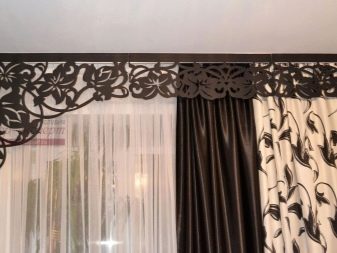
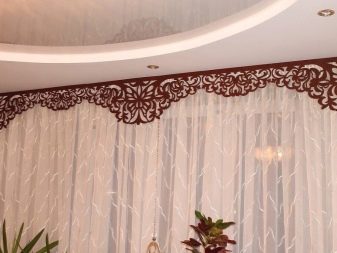
Chiffon
Lightweight, translucent fabric. Allows you to use vibrant colors without overloading the room. Beautiful folds formed from chiffon will flow from the slightest breeze when the window is open. A very good option if you want to add lightness and space to the living room.

Atlas
This is a fairly dense fabric. Recommended for use when sewing lambrequins for a large living room. Atlas has a characteristic brilliance. For window design, it is better to combine it with a veil. It will add solidity and not look cheap. Satin drapes well and keeps its shape.
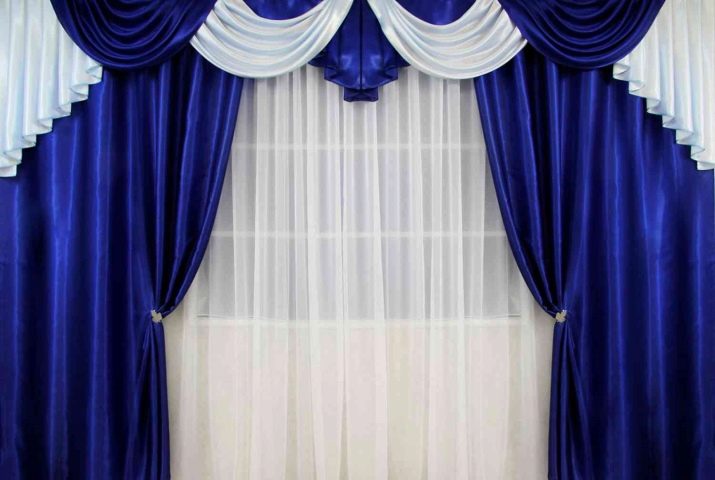
Jacquard
The fabric is characterized by a relief pattern. Visually, it is very similar to a tapestry. For sewing a lambrequin use fabric with thick threads. Depending on the print, it can be suitable for an underground or high-tech living room.

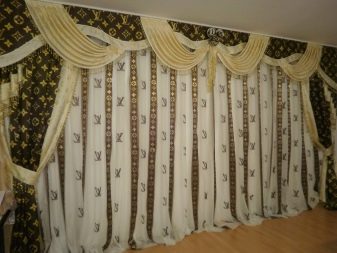
Linen
It differs from other fabrics in its characteristic matte sheen. A pelmet made of such material will be a good decor element for a living room in any style, but most often used in modern and country style.

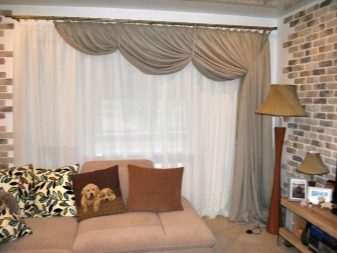
Velvet
This material is also suitable for lambrequins. It does not fade in the sun, so it will last for a long time. In addition, if your goal is to darken the room, then velvet products are perfect.
Velvet lambrequin will add luxury and solidity to the interior of your living room.
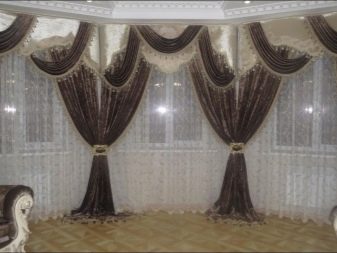
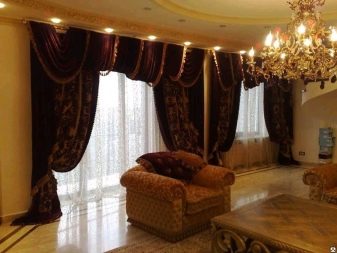
Color spectrum
Lambrequins can be made of fabric of the same color, or a combination of several shades. They must be compatible with each other.
Today, most often choose models of light beige, milk, chocolate, white, lilac, gold, purple, green, burgundy colors. A good example of contrasting combinations are red-gray, gray-blue combinations.
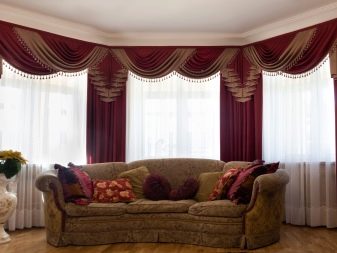
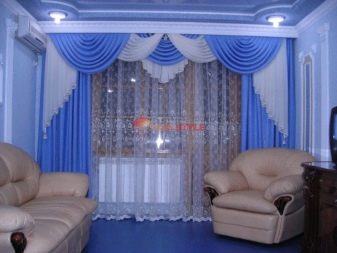
Burgundy color will add luxury and richness to your living room.
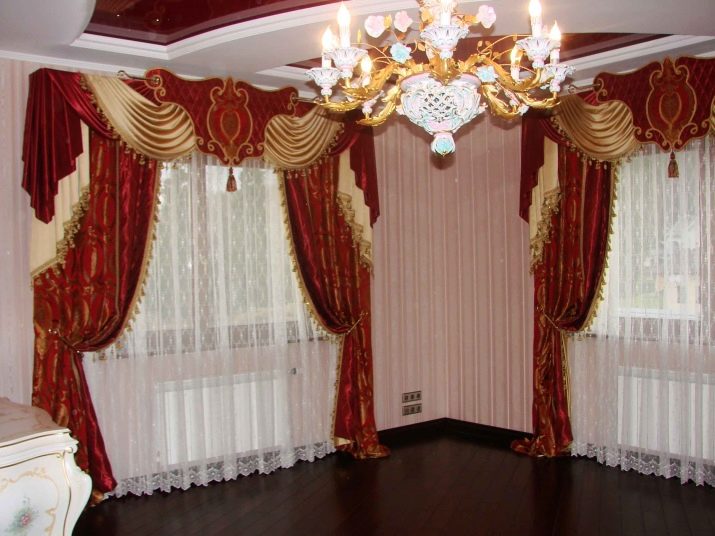
White visually expand the space and make the room larger. However, this is a very capricious color in service, since it is easily soiled.
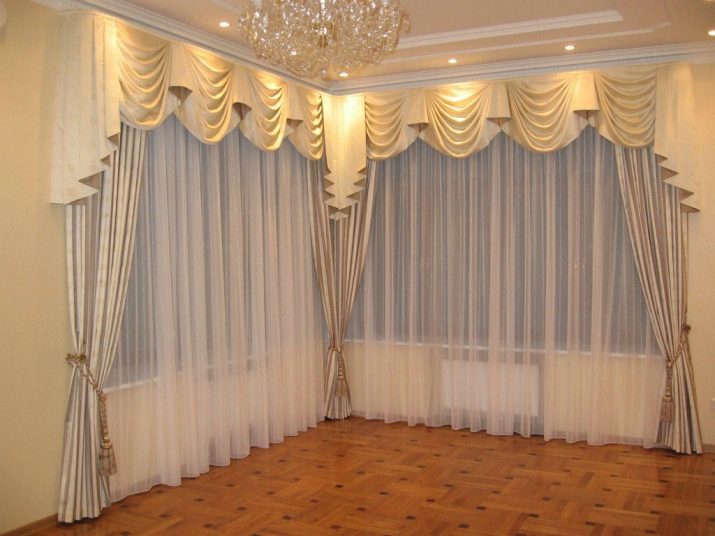
Blue color will make the room festive. It is better if it will be present in other decorative elements, for example, in the upholstery of chairs or cushions.
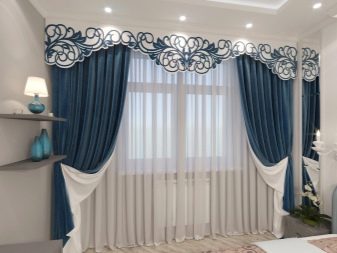
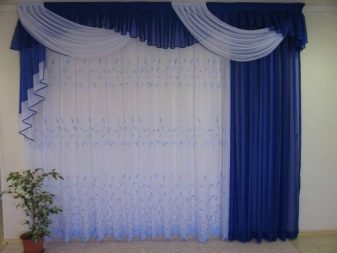
Brown and all its shades give the room a cosiness. In addition, they are appropriate for almost any living room style.

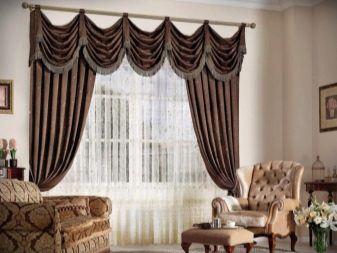
Beige color for a lambrequin allows you to play with the texture of the fabric, decorative elements and drapery options.
This neutral color is suitable for almost any room.

Green will refresh any living room. It is most suitable for country and Provence styles.
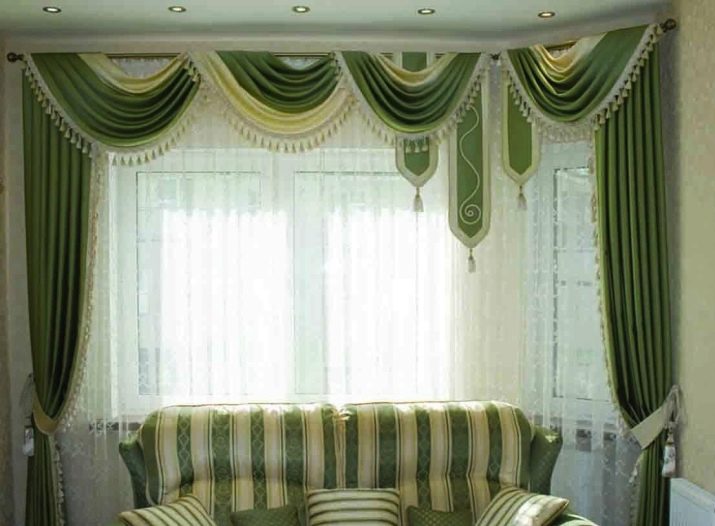
Pink and lilac colors suitable for a living room, the walls of which are decorated with tones similar in shade.
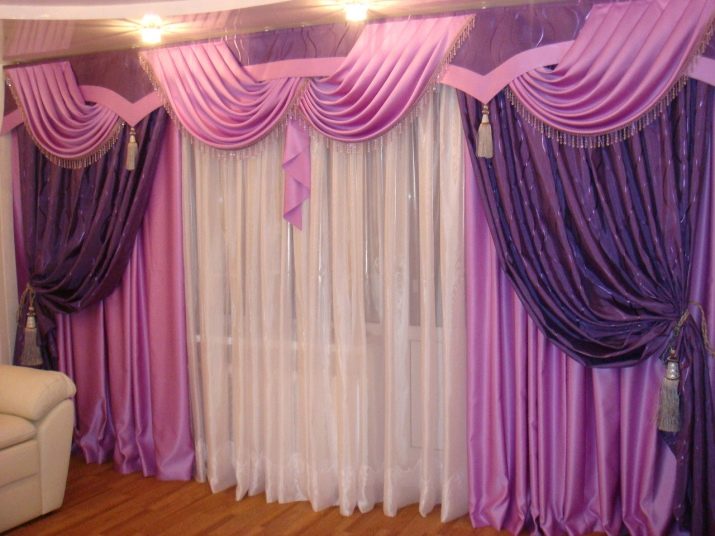
Choosing a color for a lambrequin, consider the color scheme of the curtains and the entire room. In some cases, contrasting combinations are suitable, and sometimes it is better to dwell on shades of the same color, making smooth transitions.
If your choice fell on a fabric with a print, then it is better to combine it with a lighter fabric when making a lambrequin. For example, combine swag made of dense material with swag made of veil.
Recently, it is often preferred finishing made along the edge of the lambrequin.
Here it is better to opt for white or gold. A bright accent can ruin the whole composition.

Design options
Today, there are many options for the design of lambrequins. Choose the one that best suits the style of your living room.
Openwork
Such decor can be made of dense material and cut using a laser, or from felt or felt. The smaller the room in which you are going to use such an element of decor, the more laconic the drawing should be. If you plan to decorate a large hall, then volumetric openwork elements will do. It is best if the pattern of the decor of such a lambrequin repeats the print on the upholstery or any other ornament present in the design of the living room.
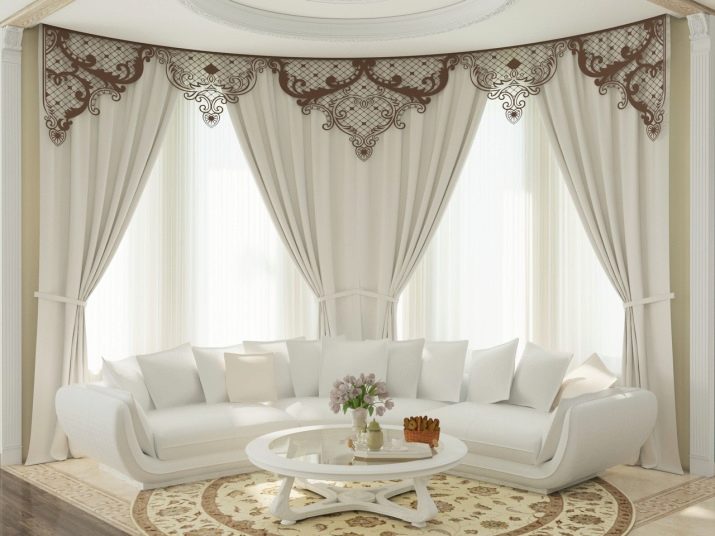
Asymmetric
With this lambrequin design, the window is draped on one side. Usually it is used if it is necessary to decorate a window opening with a balcony door, or the furniture in the living room is arranged in such a way that there is no way to open the space on both sides of the window.
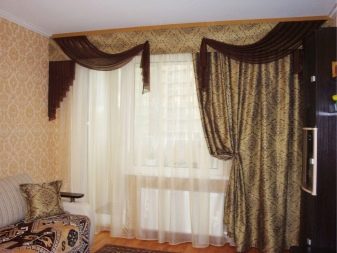

Puffs
Such drapery in the form of vertical folds looks good both in large halls and in small living rooms.
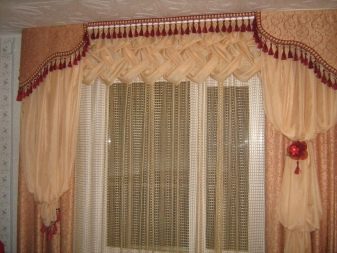

Fringed
In addition to fringes, beads, bugles, and various beads are used on lambrequins.
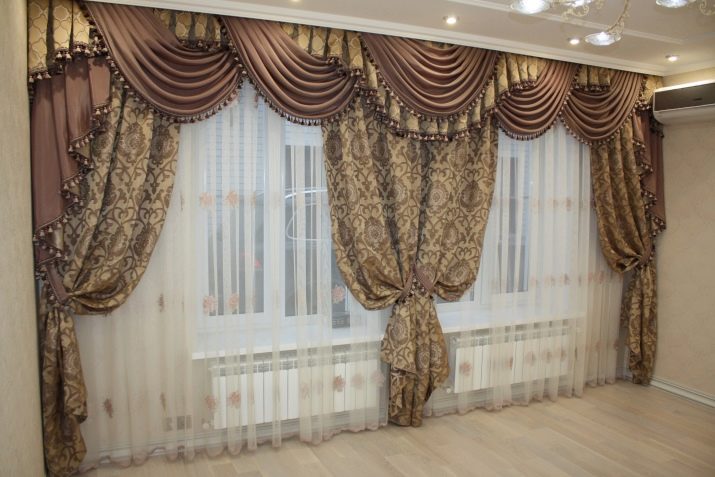
With brushes
Often brushes are used to decorate lambrequins.
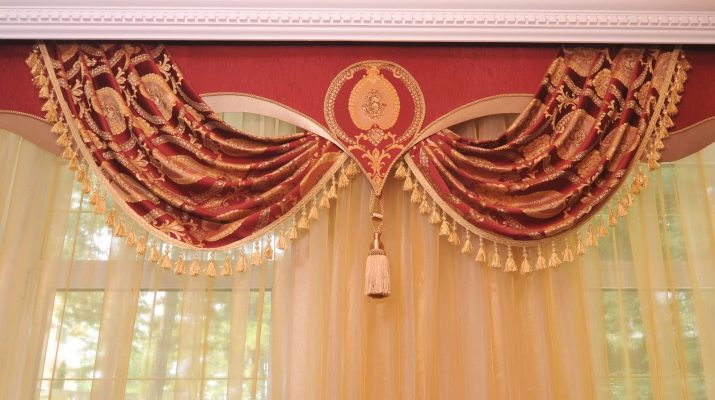
With rhinestones
Rhinestones will be a good addition to an openwork lambrequin.
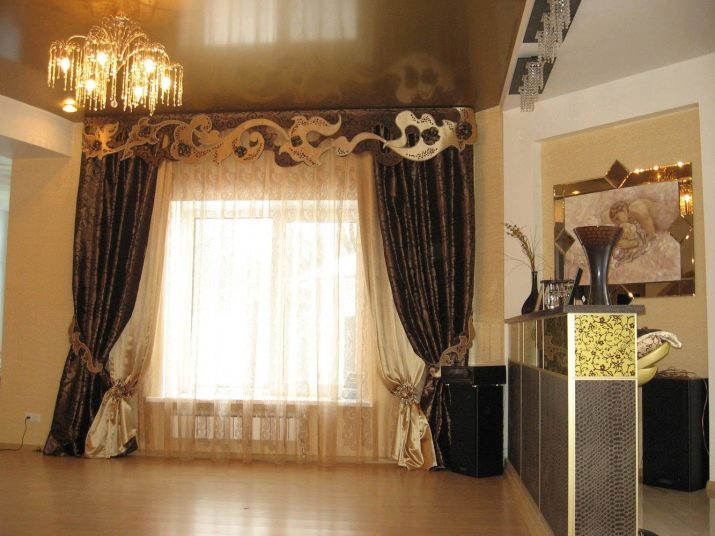
Simple
If you are decorating a small living room, then you should not overload it with unnecessary elements. Laconic design, clear lines will visually make the ceiling higher and the room larger.

Quadrangular shape
This is a lambrequin made from a cut of fabric using a lining. It can be of the same color with a lambrequin or contrasting. The ability to change the fastening method and width will allow your living room to sparkle with new colors.
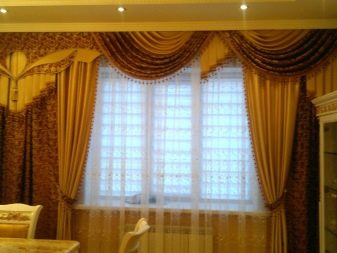

With flowers
When choosing such a lambrequin, you need to be careful. It is important to respect the proportions of the living room and the size of the flowers. Too voluminous drawing is inappropriate in a small room, it will visually make it even smaller.
In addition, if the walls are decorated in light colors, then it is better to give preference to a print of dark colors. The novelty of this season is the fabric for lambrequins made of large flowers.
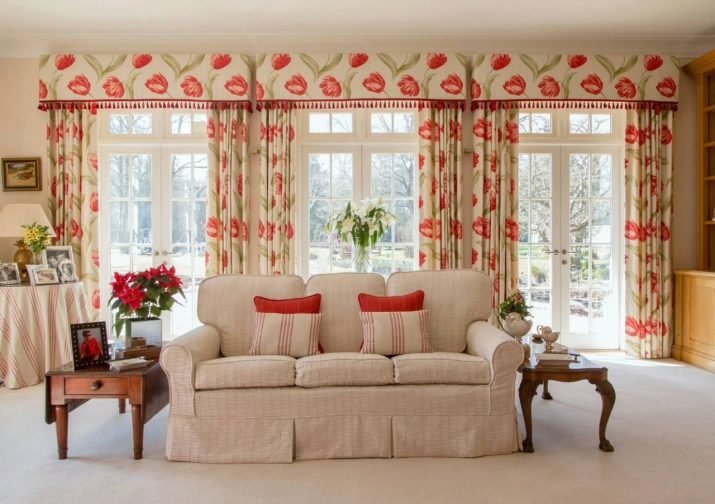
With photo printing
Such lambrequins are now gaining more and more popularity. Photo printing is used on rigid models.

Bicolor
They can be made from shades of the same color, for example, beige and chocolate, or be contrasting. They are performed, as a rule, in the form of alternating swags. In addition to the tones of the fabric, you can play with the texture.
Swags made of light and dense material look interesting. Suitable for classic, modern and many other styles.
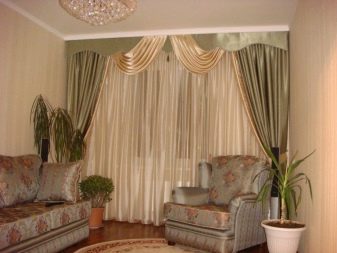

Selection Tips
When choosing lambrequins, there are several subtleties.
- Lambrequin is more of a decor element for a room with a high ceiling, as it often visually conceals the height. If it is less than 2.5 meters in your living room, then take a closer look at the fabric with a vertical pattern.
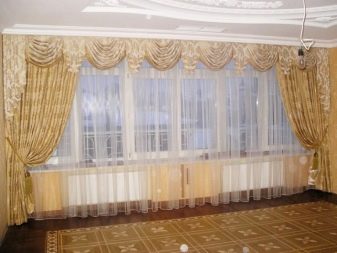

- The height of a standard lambrequin is 40 centimeters. If you want to make it already, then try on in advance how it will look on the window opening.
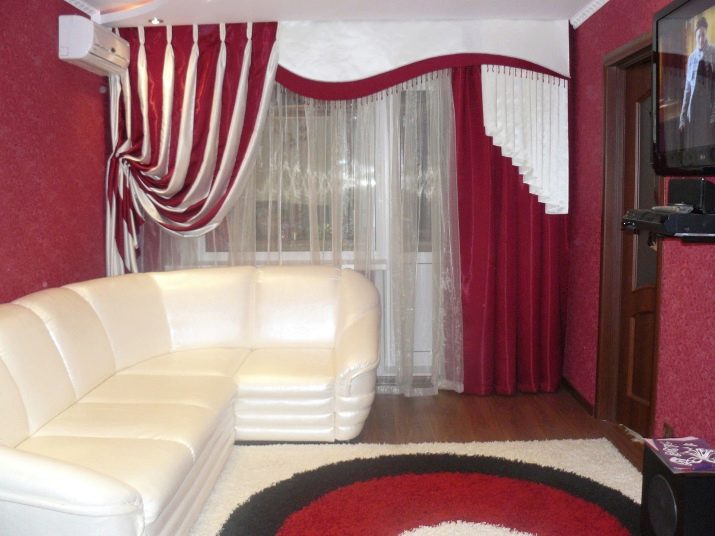
- The color of the lambrequin should be in harmony with the overall composition of curtains and curtains.
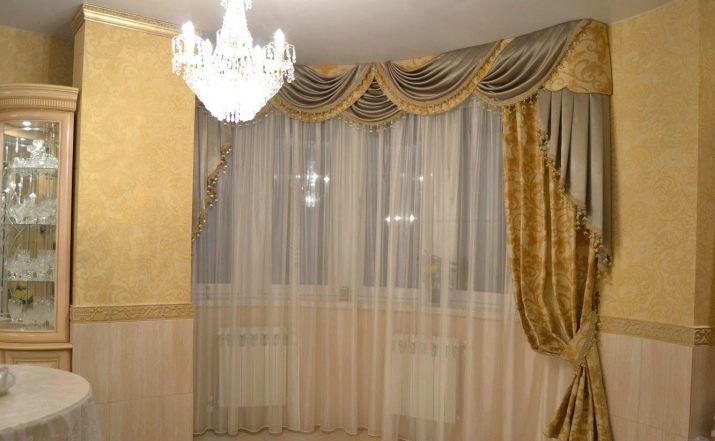
- If you choose a lambrequin for a small living room, then give preference to a laconic design with a small amount of flounces. If you are decorating a large room, then it is better to choose a voluminous lambrequin with many elements.
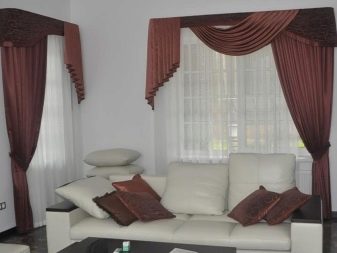
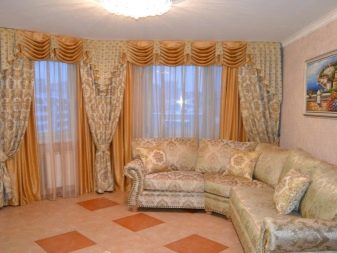
- If the windows face the sunny side, then you can pick up a lambrequin made of dense heavy fabric. Otherwise, give preference to sewn from organza or veil.
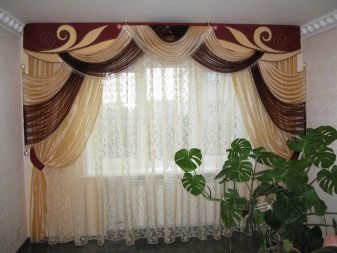
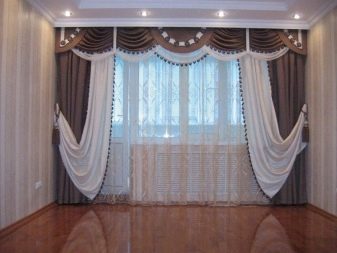
- Lambrequin can be ready-made or custom-made. If you prefer ready-made window décor kits, make sure it fits perfectly. When ordering a lambrequin individually, you can take into account all the nuances of the decor.
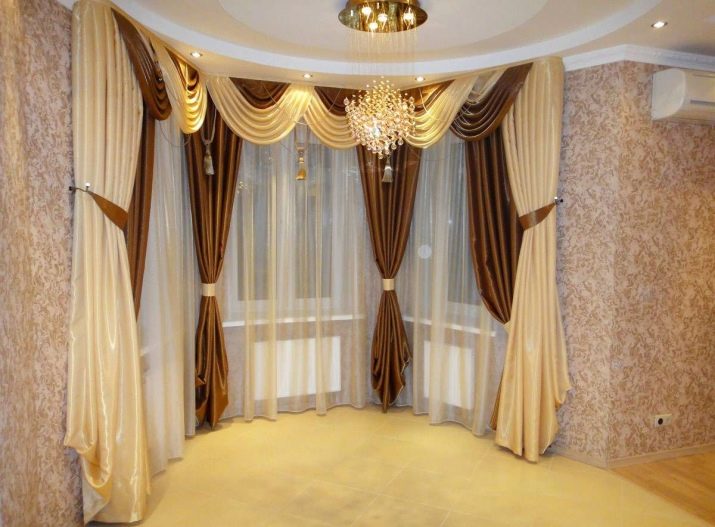
- If you need to choose a lambrequin for two windows located on the same wall, then it is best to give preference to the chill mold. It will emphasize the boundaries between window openings and give the room space.
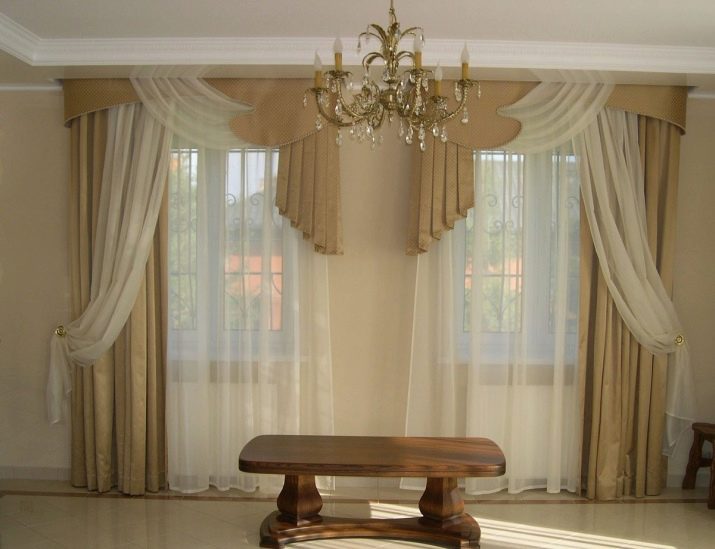
- If you need to decorate a window opening with a balcony, then take a closer look at asymmetric lambrequins. The main requirement is that the composition on the window should not interfere with free passage to the balcony.

- When choosing a lambrequin for a small window, keep in mind that it should not go into the window opening. If the frame is left open, the space will visually appear larger. Of the decorative elements, the most appropriate will be a throw or drapery in the form of a cascade. In addition, such models can be made asymmetrical by adding additional decorations in the form of brushes or fringes.
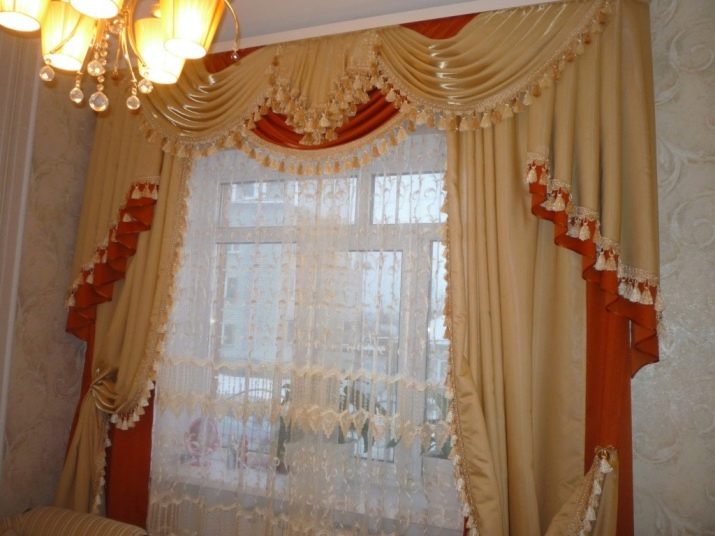
- On the contrary, it is better to partially cover a narrow window with a lambrequin. If your living room has high ceilings, the pleated model is the best option.
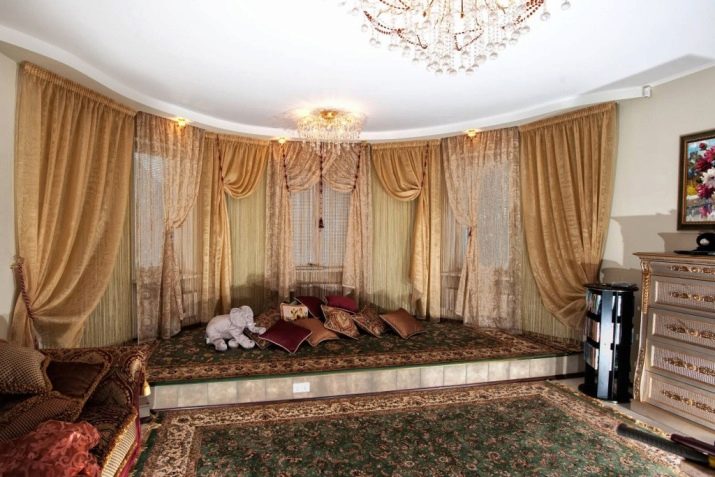
- Rigid models can visually add a few centimeters to the ceiling height.
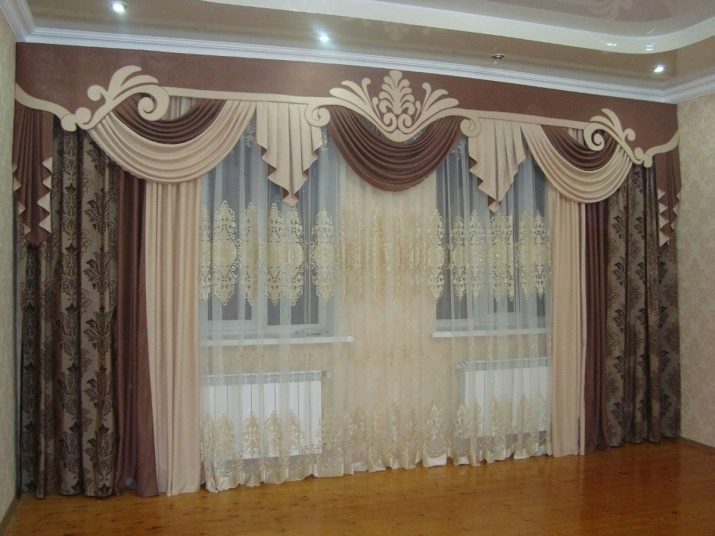
- If your living room has bay windows, then you should give preference to soft lambrequins with a bell decor element.
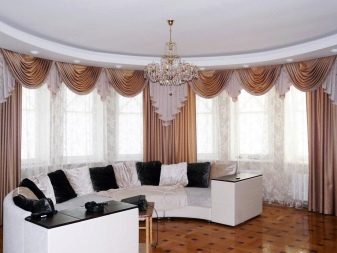
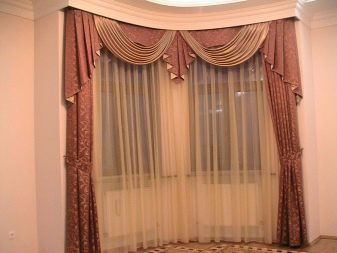
- The corner window should be decorated symmetrically, since both walls will have to be decorated. A chill mold or tie located in the corner would be a good decorative element.
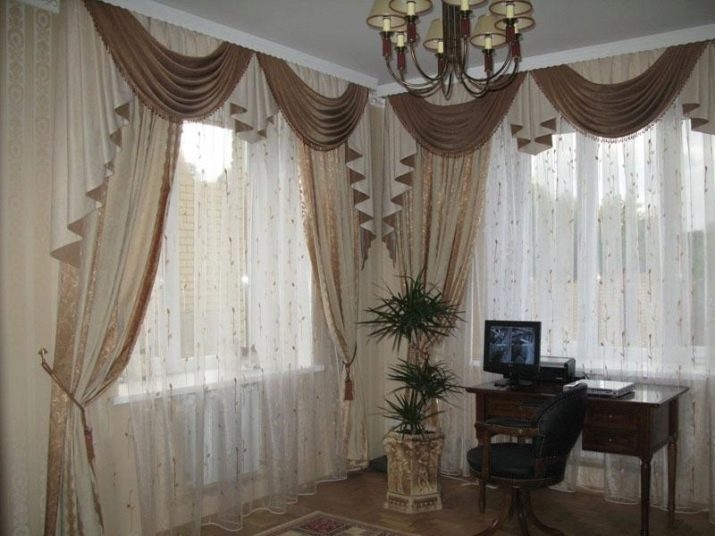
- Choose a lambrequin based on the overall design of the living room.

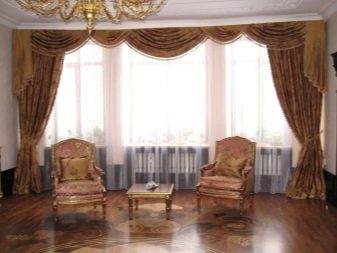
If your living room is done in a modern style, then the design of the lambrequin should be laconic, and the fabric is preferable to choose natural. The colors should be calm and the shape as simple as possible.
Lambrequin in the living room in classic style it is preferable to do it in beige tones, while combining various textures. The classics do not tolerate unnecessary details, so do not overload the lambrequin with decorative elements.
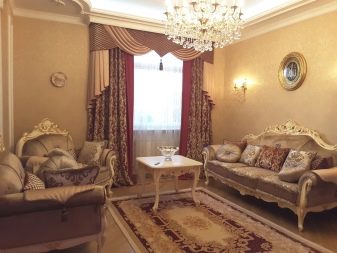
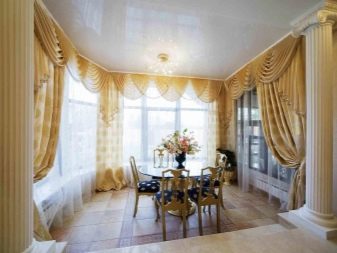
Style baroque in the living room emphasizes luxury and wealth. Lambrequin must correspond to this. Give preference to reds, golds and burgundy tones. It is better to use heavy fabrics as a material, from which bulk folds are made.
In general, you should get a solemn, to some extent theatrical decor.
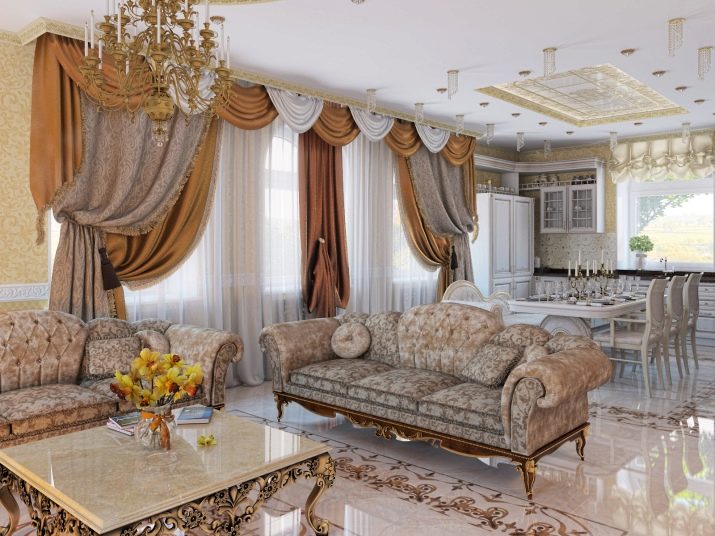
If your living room is decorated in the style of minimalism, this is not a reason to refuse lambrequins. Choose a simple one with a minimum of decor. Clear lines, strict forms - all this will emphasize the restrained and strict style of minimalism.
It is better to take neutral colors.
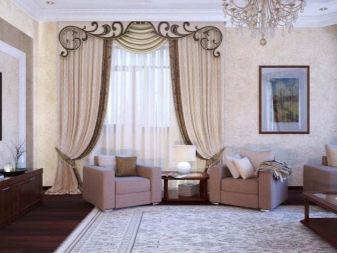

Living room in style provence successfully complemented by a lambrequin made of light and airy fabric of a calm tone or with a floral print. Graceful, neat folds will only emphasize the zest of this design.
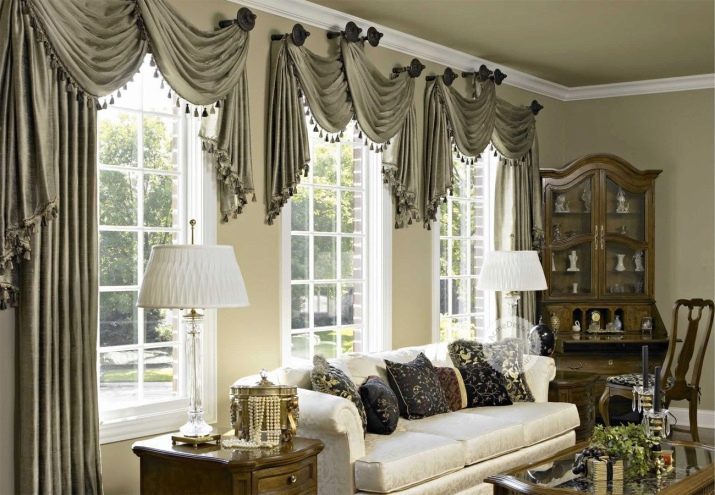
If you make a living room in style country, then you can not do without beautiful curtains with lambrequins. They should have the same pattern with any piece of furniture, for example, upholstered chairs, or with a decorative element, for example, a tablecloth.

Choosing a lambrequin in the living room in style shabby chic, give preference to models with appliqué and do not forget about the variety of colors inherent in this style.
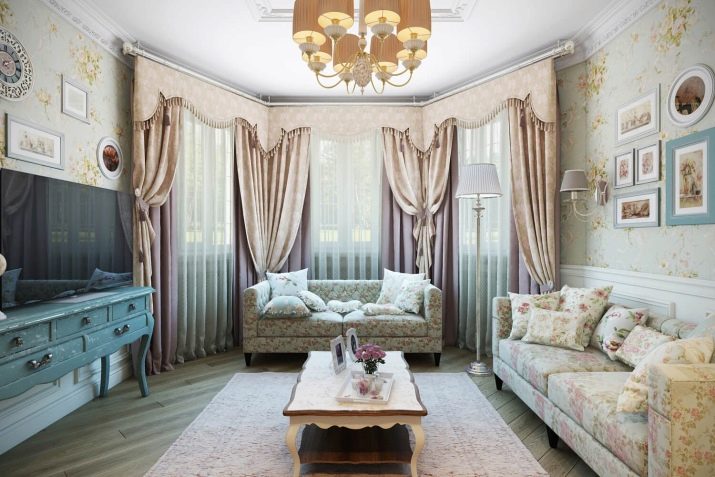
In general, the lambrequin should be a complete composition with curtains and curtains. Modern models allow you to combine them even with blinds.
Beautiful examples
The beige and chocolate colors go well with the overall decor of the living room. A hard openwork lambrequin practically repeats the pattern on the wallpaper, which brings harmony to the interior of the room.
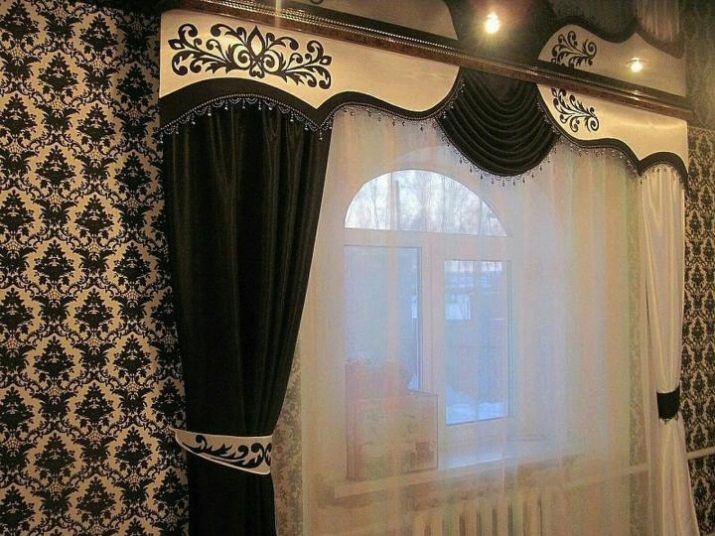
A simple lambrequin, devoid of any decorative elements, successfully complements the living room, made in a classic style.
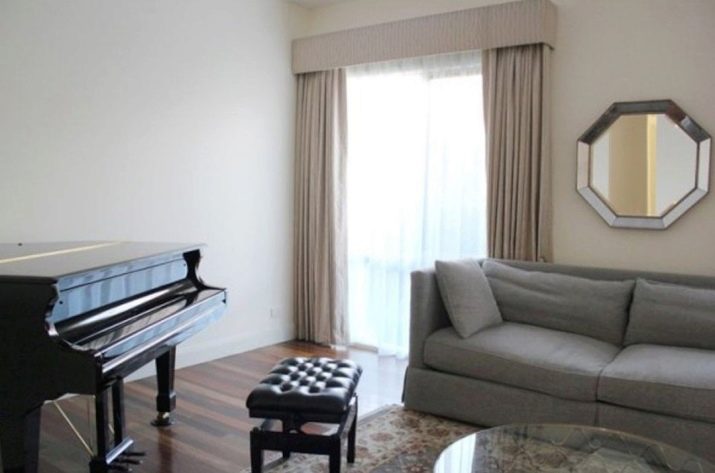
Restrained tones and the presence of a decorative element in the form of a chill mold delimit the window openings, add lightness and space to the room.
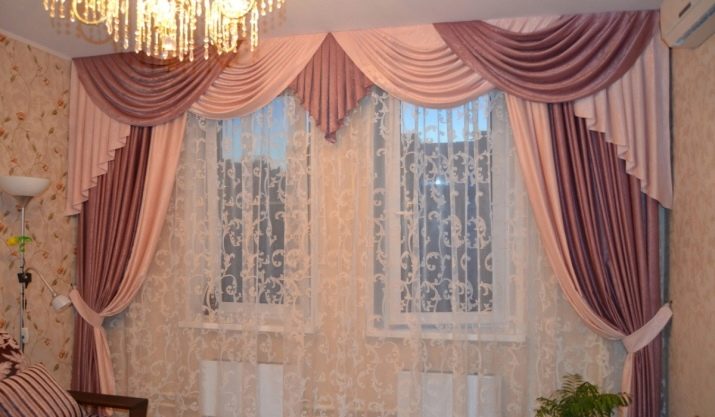
A sophisticated design with the use of bandeau, brushes, various drapery methods gives the living room a solemn look.

The combination of various colors and textures of the fabric from which the lambrequin is made add integrity to the design of the living room and make it stylish.
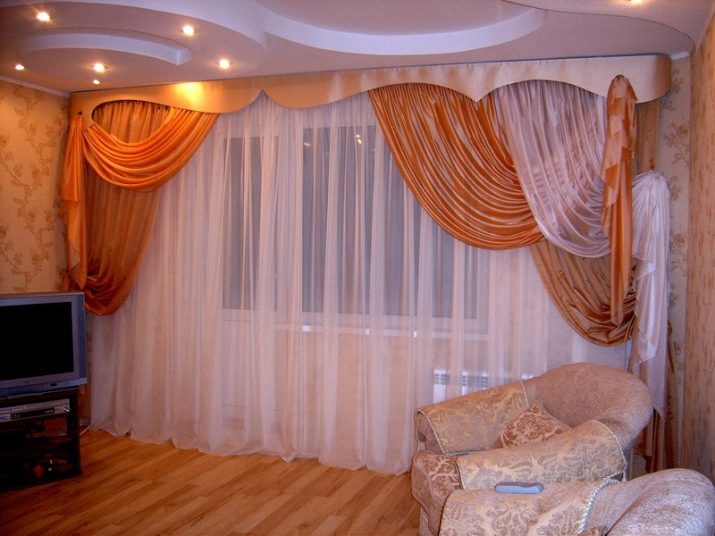
About what 3D-lambrequins are, see below.








